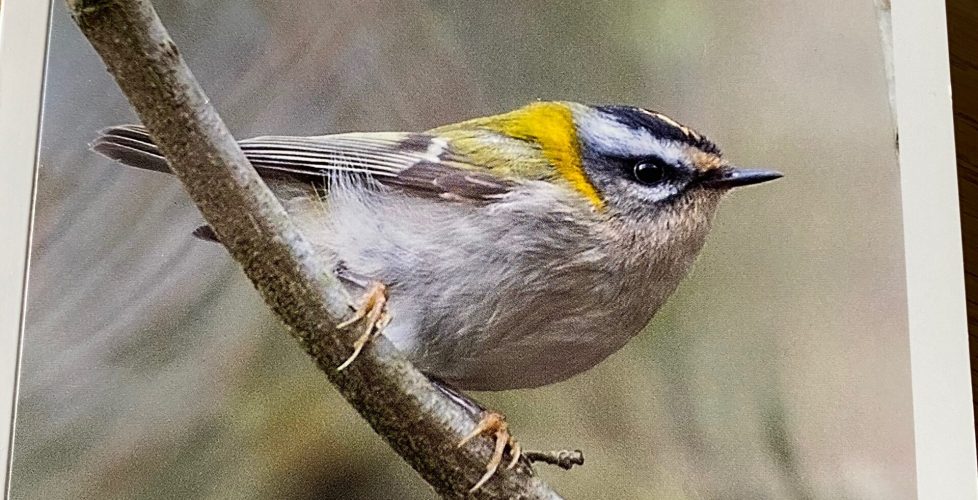Writing as a hobby
In my last blog post I summarised some of the reasons which pushed (and encouraged) us into committing to being self-employed. In my case, a dominant motivator was that I wanted to be paid solely for writing copy.
I had been writing as a hobby for years, and copywriting had always been a part of my previous job roles. But for various reasons, it was always a minor part of those jobs.
So for this latest post, I thought I’d briefly expand on my experience of writing as a hobby. People who know me won’t be in the least surprised to learn that this mostly revolves around birding (birdwatching)!
A warning for the uninitiated – things are going to get pretty nerdy pretty quickly. Nerdy, but by no means technical, I hope.
The Bucks Bird Club
Every year (usually in early January) an email appears in my inbox which always gives me great pleasure. It’s a very sizeable spreadsheet detailing all the bird sightings in Buckinghamshire for the previous year. Well, not all of them of course, but certainly all the records that have been submitted into a database run by the Bucks Bird Club.
Yup, birders have clubs….of course we do! Unbridled enthusiasm unites anyone who is interested in a particular hobby. With that enthusiasm comes the need to talk, argue, share, and write. Practically every county in the UK has a busy and thriving bird club. Their members are kept busy with tasks such as:
- collate bird sightings
- organise events and field trips to bird reserves
- raise funds to keep the club going
- advise on local conservation issues
Collating bird sightings
But it’s the bird sightings I’m concentrating on here. Thousands…no, tens of thousands of records, all submitted by enthusiastic observers from dozens of locations across Buckinghamshire. These records are then collated and summarised and published every year as an annual report (copies available here).
Birders love browsing through these reports for many reasons. We just love knowing who has seen what and where they saw it – we’re very nosy! We enjoy scouring through the data to look at population changes over time, or what date the first Swallow of the summer was seen, for example.
I also think that a large part of the enjoyment derives from having something physical in your hand to read which reinforces your connection to your local area. An annual report is a summary of the birdlife where you live. It’s a snapshot of what you can see when you step outside your door.
Writing the Bucks Bird Club annual report
This annual report needs writing though, which is a huge task. One person co-ordinates this and delegates the writing of the report to several willing volunteers, each of whom writes about several particular species of birds.
I’ve been an enthusiastic volunteer for many years now, writing about the annual status of gulls and terns in Buckinghamshire. Most people are familiar with gulls. Anyone who’s been to the coast will have seen Herring Gulls, those grey-backed chip-stealers with blazing yellow eyes. And most non-birders will have seen Black-headed Gulls poking about on football fields in winter too, even if they didn’t necessarily know what those birds were.
Terns are often called “Swallows of the sea” and one can see why. They are long-distance migrants, gleaming white birds with slim wings and long tails which arrive in the UK from Africa every spring.
The species which breeds in Buckinghamshire – the Common Tern – can be seen at most lakes throughout the summer. It’s a handsome and rather raucous bird, which sometimes seems to bounce through the air with its buoyant yet deceptively powerful flight.
A specialist kind of writing
So finally we get to the point of this post, which rather self-indulgently allows me to show a few examples of what I’ve written over the years. The part of this writing process I enjoy the most is summarising a whole year’s worth of data into a couple of paragraphs.
Whilst it’s true that I’m writing for a ‘home-run’ audience, there’s still the requirement to write for the knowledgeable demands of that audience.
I always try to squeeze in a comment or little nugget of personal opinion into some of the accounts too. Usually, this is provoked by a decline in populations (sadly all too frequent nowadays), or if the species involved is rare or unusual.
I’ve chosen a couple of species accounts from the 2019 Annual Report, which is the most recent published one (an image of which heads up this post). The rather handsome bird on the cover is a Firecrest (learn about Firecrests here). For some of the more notable sightings, it’s standard practice to acknowledge them in the text with the observer’s initials.
The species covered here are:
- Little Gull, which is one of my favourite birds;
- Lesser Black-backed Gull, a relatively common large gull;
- and Common Tern, a species which I’ve already mentioned.
Hopefully, these concise accounts not only impart useful information but give you an idea of how an annual report reads.
Little Gull Hydrocoloeus minutus Passage migrant in modest numbers.
Caldecotte: 1 on April 8th (RJN).
Calvert: 1 on April 7th, 4 on 8th, 7 on 9th, 2 on 11th and 12th, then a gap until 1 on April 26th (WLC, TJW, MSH).
College Lake: 8 on April 9th and 3 on 13th (ACB), 2 on May 7th (EG, LGRE).
Foxcote: 2 on April 8th (PJT), 1 on May 6th (JR).
Linford: 1 on May 6th (HA).
Marlow: 7 on April 8th dropping to a single on 9th (DJB, ADB et al), 3 on April 22nd (AJS et al).
Startops: 12 on April 8th (LGRE), with 1 on 10th (RN).
This truly delightful gull is always a highlight of Spring, and a minimum of 49 birds represents a dramatic and most welcome increase on 2018, with an obvious concentrated passage in early April.
Lesser Black-backed Gull Larus fuscus Abundant passage migrant, common winter visitor. Occasional breeder in very small numbers.
As in 2018 a pair bred at College Lake, with 3 young fledging successfully. In addition, a pair displayed and attempted to construct a nest at Calvert, but the attempt wasn’t followed through. Mating was also seen at Marlow in May but again no further breeding activity was noted.
Just a tiny handful of four-figure counts were submitted. However as with several other gull species, the rather unobtrusive Newton Leys housing estate in Milton Keynes gained increasing prominence (and coverage) throughout the year. Although the adjacent Newton Longville refuse tip has been much reduced in size, gulls still seem quite happy to hang around the local area.
The most significant counts during the year were as follows:
April – 80 at Calvert
May – 55 at Caldecotte
July – 180 at Newton Leys
August – 200 at Marlow, 250 at Newton Leys, 213 at Steps Hill, 58 at Manor Farm, 40 at Foxcote, 28 at College Lake
September – 3000 at Calvert, 700 at Newton Leys, 400 at Haddenham, 92 at Ravenstone STW, 71 at College Lake, 60 at Caldecotte, 30 at Marlow
October – 180 at College Lake, 90 at Gallows Bridge, 65 at Foxcote, 20 at Lee Common
November – 350 at Gallows Bridge, 67 at Springfield Farm
An absolute paucity of birds in the first winter period was more than compensated for by our strongest autumn passage for several years, with a much more even geographical spread across the county. Other than at Newton Leys though, numbers of summering birds were very low.
Common Tern Sterna hirundo Common passage migrant and breeder.
Nearly 280 reports from 34 sites is a decent return, although for the first time in many years, we didn’t have a single flock of over 50 birds.
Once again, the first birds were seen in early April, with 1 at Calvert on 3rd and 6th (TJW), swiftly followed by singles at Marlow and Furzton, also on 6th. However, it took a good two weeks before Common Terns became more widespread; they seemed particularly thin on the ground in north Bucks.
Breeding success or otherwise can be summarised as follows:
Calvert: a pair were seen displaying and mating in April and May, but no evidence of successful breeding.
College Lake: a relatively low maxima of 30 birds seen on May 17th, and numbers of fledged young seen were also low, with 7 on July 20th. As usual with this site, breeding birds dispersed soon after, and there were very few autumn records.
Manor Farm: 18 birds on July 20th included 9 recently fledged juveniles, although breeding wasn’t proven to have occurred at this site.
Foxcote: 23 birds were seen on May 9th, and small numbers were present throughout the summer, waiting for the gulls to finish with the rafts. Whilst a late breeding attempt wasn’t definitively proven, 3 juveniles being fed on the dam on July 21st indicates that it did happen.
Marlow: up to 30 birds were present by the end of April, and the thankfully gull-free rafts were once again well used. Up to 16 pairs fledged at least 12 young by June 12th, and by the end of July an undocumented number of late-fledged chicks were still being fed by adults.
Stony Stratford NR: 20 adults and 5 young seen on June 26th, with suspicion of yet more young in the deep vegetation on July 4th.
A dispiritingly terse summary. It’s quite clear that despite being one of our most familiar summer visitors, Common Terns are in trouble as a breeding bird in Bucks, succumbing to the twin threats of lack of suitable habitat, and an explosion in our Black-headed Gull population. It’s entirely possible that within a year or two we could end up with just a couple of breeding sites.
In a typically truncated autumn passage, most birds had cleared off by late August, with just a scattered handful of birds at various sites. It looked like 2 at Linford on August 31st (RSH) would be the last, but an extremely late juvenile was found at Marlow on October 7th (ADB). Staying for ten days, by the time it left on the 17th (SRa) it had become the latest recorded Common Tern in Bucks.
And that’s it! If you’ve made it this far, thanks for indulging me, and one small aspect of a hobby I have been passionate about for nearly 40 years. It’s not often I get to write about writing about birds!

